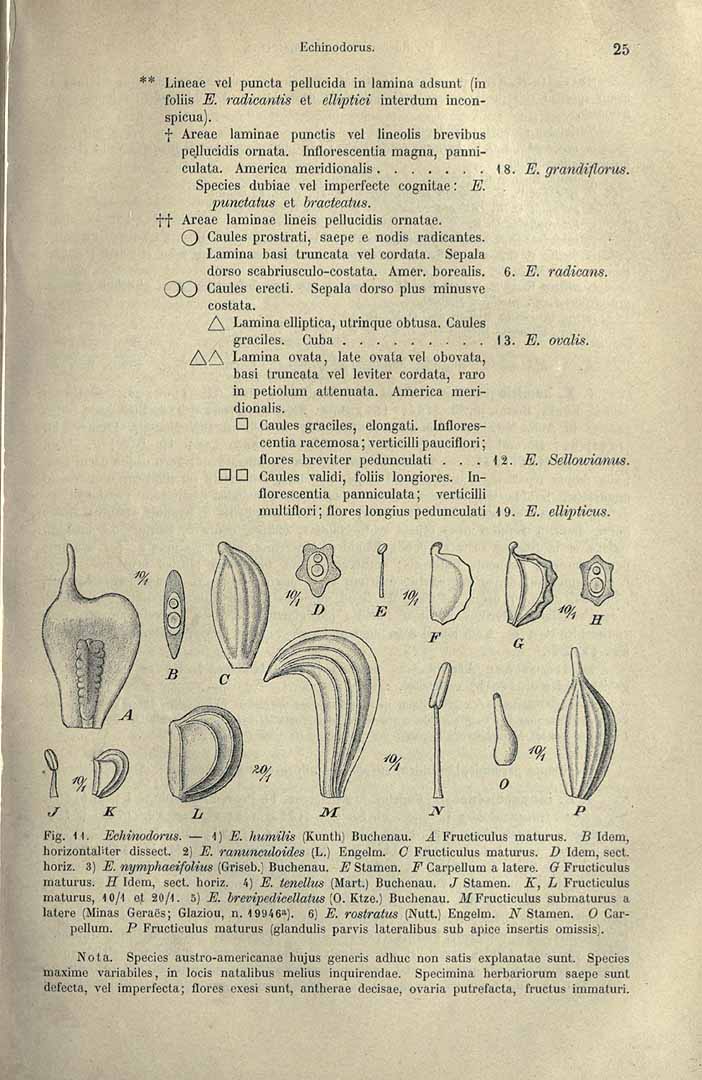Plants of South Florida · Plants by Conservation Area · Plants by County · Plants by Habitat Quick Search · Advanced Search |
||
|
|
||
 |
Echinodorus berteroi (Spreng.) Fassett Upright burrhead |
|
|
South Florida Status: Historical. Last collected in 1982 in the Pinecrest area of Big Cypress National Preserve. Taxonomy: Monocotyledon; Alismataceae. Habit: Perennial terrestrial herb. Distribution: Native, but local, to North America, the West Indies, South America, and Mexico. Wunderlin (1998) reports it as occasional in Florida in Taylor County south to Levy County, Monroe County, and Escambia County. Wunderlin & Hansen (2001) records it for Monroe, Dixie, Levy, and Taylor counties. South Florida Distribution: Monroe County. South Florida Habitats: Shallow fresh water. Protection Status: Not listed by any agency. Aids to Identification: E. berteroi is similar to some Sagittaria species, but can be distinguished by having all bisexual flowers instead of upper male flowers and lower female flowers (Wunderlin, 1998). References: Chapman, 1883; Small, 1933a; Fassett, 1959; Godfrey & Wooten, 1979; Correll & Correll, 1982; Wunderlin, 1998; Flora of North America Editorial Committee, 2000. Synonyms: E. cordifolius (L.) Griseb., misapplied; E. rostratus (Nutt.) Engelm.; Echinocarpus radiatus of Melville (1882). Historical Context: John Loomis Blodgett first collected upright burhead on the island of Key West between 1838 and 1853 (s.n., NY). It also was reported for Key West by Melville (1884). It was collected on Lower Matecumbe Key in 1892 by Joseph H. Simpson (434, NY) and in 1948 by J.S. Haeger (s.n., FLAS). Both of these collections were probably from the margins of permanent freshwater ponds described by the British surveyor Bernard Romans (1775). David and Sally Black collected upright burhead once in 1982 in the Pinecrest area of Big Cypress National Preserve (s.n., FTG). One plant was observed, which was collected for the FTG specimen (S. Black, personal communication, 2 July 2001). It has not been seen in South Florida since that time. Comments: Upright burhead flowers during the spring and summer, when surveys should be conducted. Recommendations: · Survey Pinecrest area of Big Cypress National Preserve. · If plants are found, map and monitor known populations. · Consider restoring freshwater wetlands on Lower Matecumbe Key and reintroducing upright burhead. · Review for listing by FDACS and FNAI. |
||



